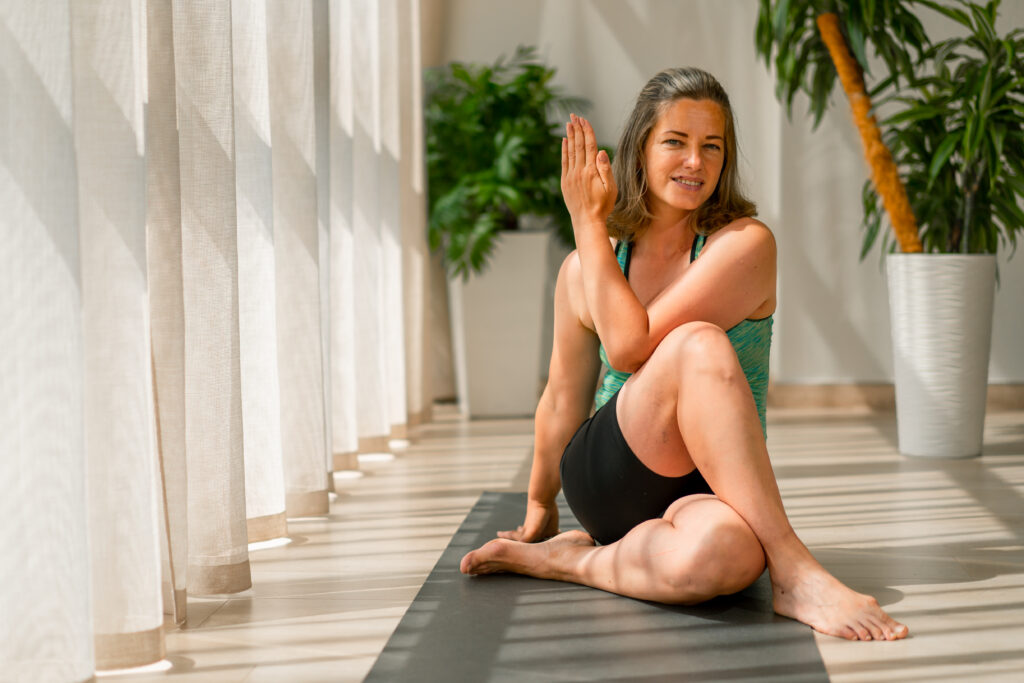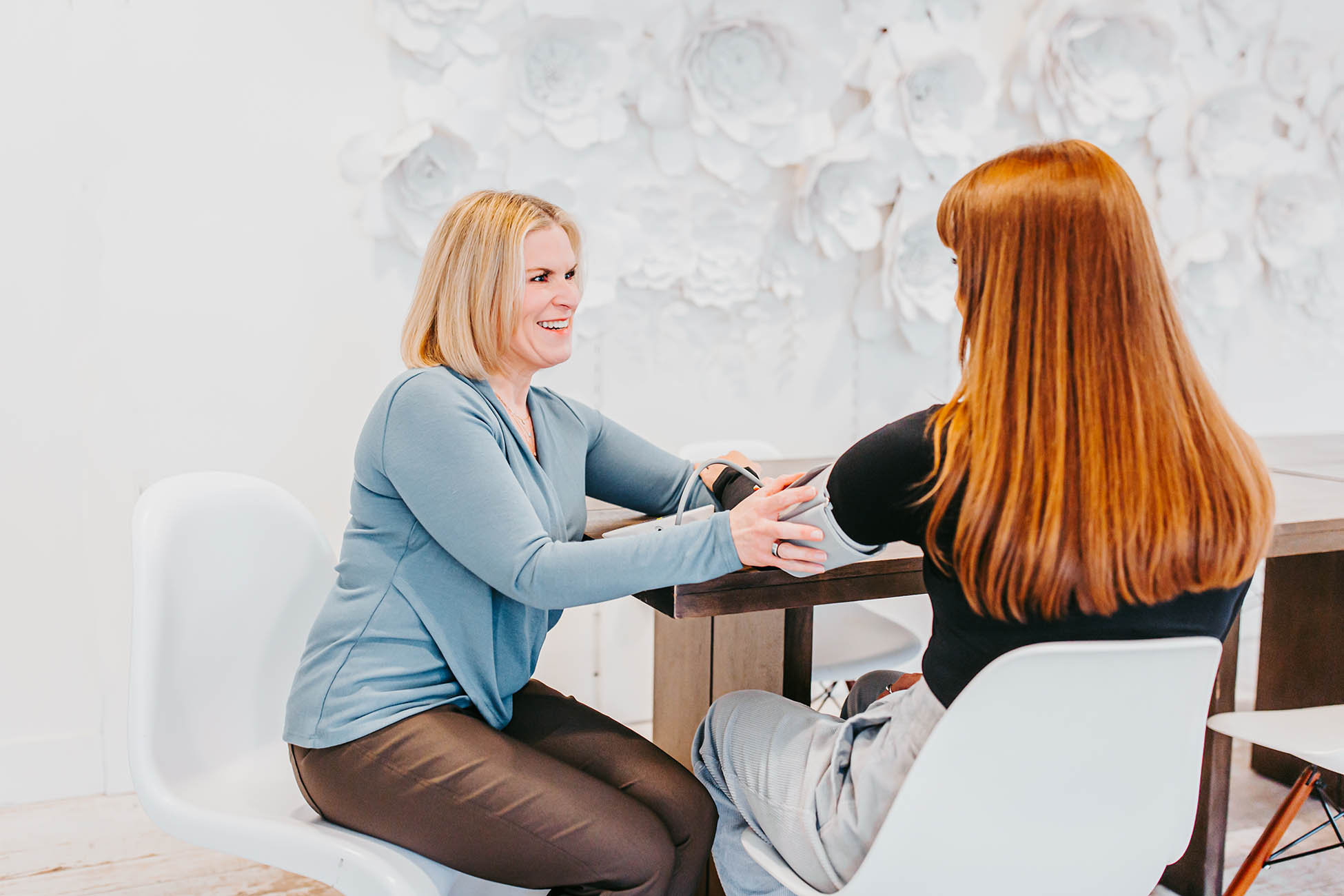Menopause, a natural phase in every woman’s life, can bring a wave of physical and psychological changes. From mood swings to weight gain and discomfort in the body, the effects of declining hormone levels are widespread. But what if there was a way to alleviate some of these discomforts? New research suggests that yoga might hold the key.
A recent study (PMID 38709129) discovered that practicing yoga for just 60 minutes, twice a week, significantly reduced the discomforts of menopause. This randomized controlled trial focused on women aged 40 to 60 and found that yoga improved psychological well-being, physical health, and even urogenital issues. Sounds promising, right? Let’s dive deeper into how yoga, combined with other forms of exercise, can be an essential part of your journey to better health during menopause.

The Magic of Yoga: More Than Just Stretching
Yoga is often praised for its ability to calm the mind and improve flexibility, but its benefits go much deeper, especially during menopause. According to the study, women who practiced yoga regularly experienced significant relief from symptoms compared to those who didn’t have any intervention.
Here are three key areas where yoga showed positive results:
Psychological Health: Mood swings, anxiety, and even depression are common during menopause. The mindfulness aspect of yoga helps to calm the mind and reduce stress, which can improve your emotional health.
Physical Concerns: Menopause can trigger a variety of physical issues, including weight gain, joint pain, and reduced mobility. Yoga’s gentle yet effective stretches strengthen muscles and improve flexibility, making everyday activities easier.
Urogenital Issues: Changes in hormone levels during menopause can lead to urinary incontinence or discomfort. Certain yoga poses can help strengthen the pelvic floor, reducing these symptoms and improving quality of life.
Why Exercise is Crucial During Menopause
During menopause, hormone levels fluctuate, causing changes in the body that can affect mood, bone health, and even sleep quality. This makes exercise more important than ever. The benefits of staying active during menopause include:
Supporting Bone Health: With estrogen levels dropping, women become more susceptible to osteoporosis. Weight-bearing exercises can help maintain bone density.
Maintaining a Healthy Weight: As metabolism slows down, gaining weight can be easier during menopause. Regular physical activity helps to keep the pounds in check.
Boosting Mood and Sleep: Exercise increases endorphins, which can help improve mood and make it easier to sleep through the night.
While yoga is fantastic for balance, flexibility, and mindfulness, it’s essential to mix up your exercise routine to target other aspects of health. Here’s a well-rounded approach to staying fit and feeling great during menopause.
Building a Balanced Exercise Routine
To get the most out of your fitness routine, you’ll want to incorporate a variety of exercises that work different areas of the body. Here are four types of exercise to include in your weekly regimen:
Strength Training: This could include free weights, weight machines, resistance bands, or even bodyweight exercises like squats and push-ups. Strength training helps to build muscle and maintain bone density, which is crucial during menopause.
High-Intensity Interval Training (HIIT): HIIT involves short bursts of intense exercise, followed by rest or low-intensity periods. This form of exercise is excellent for burning calories, improving cardiovascular health, and increasing metabolism. Plus, it’s efficient—you don’t need much time to get a solid workout in.
Aerobic Exercise: Walking, running, cycling, or swimming can all be great ways to improve cardiovascular health. Aerobic exercise helps to improve lung capacity and keeps the heart healthy.
Balance & Flexibility Training: Yoga, tai chi, and Pilates are all great ways to improve balance and flexibility. These forms of exercise also help reduce the risk of falls and injury, which can become a concern as we age.
Finding What Works for You
Exercise doesn’t have to be a chore. Finding an activity you enjoy will make it easier to stay consistent, which is key to seeing long-term results. Whether it’s a brisk walk in the morning, a yoga class after work, or a quick HIIT session during lunch, the important thing is to move your body in a way that feels good.
So, what’s your favorite way to move? Maybe you’re a fan of yoga for its calming effects, or perhaps you prefer the adrenaline rush of a good cardio workout. Whatever it is, make sure it’s something you love. That way, exercise becomes a part of your lifestyle, not just another thing to check off your to-do list.
Start Your Journey to a Healthier You
If you’re ready to take control of your health and manage the symptoms of menopause, yoga and a well-rounded fitness routine could be the perfect place to start. Whether you’re looking to strengthen your bones, boost your mood, or improve your sleep, movement is key.
Book a call today to start your journey to a more vital and healthier you!







